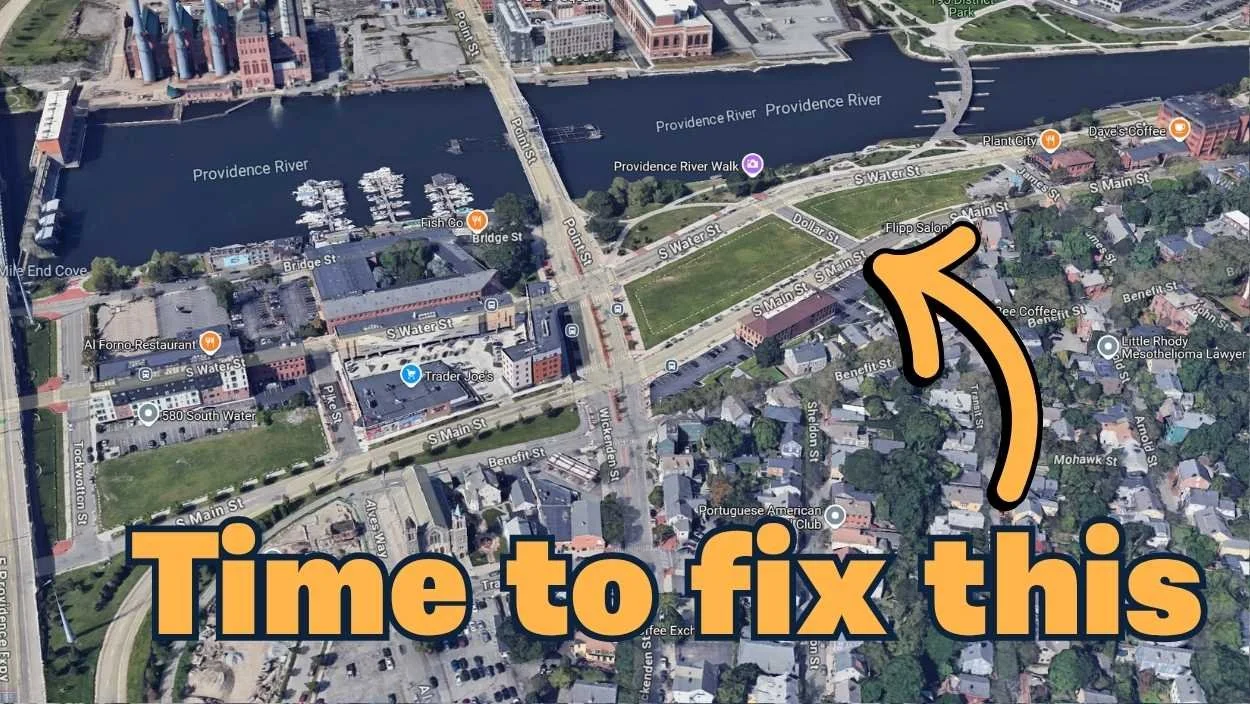The Intersection of Waste and Opportunity
Let’s be honest. A road project that doesn't actually improve how a place functions is not an improvement. If it eats up public money, makes walking a chore, and only seems reasonable because it’s cheaper than an even worse alternative, it’s still a poor investment.
That’s exactly what happened in Fairbanks, Alaska, at the intersection known as GARS. This is where Gaffney Road, Airport Way, Richardson Highway, and Steese Highway come together. During an Ask Strong Towns Anything session for members, transportation planner Corey DiRutigliano shared how the Alaska Department of Transportation first proposed a traditional grade-separated interchange for this spot. The estimated cost was around $45 million.
That number was too steep. So consultants proposed a different idea, something they called a Continuous-Flow-Intersection and Median U-Turn hybrid. It was marketed as innovative and budget-friendly. At $15 million, it looked like a $30 million savings. And construction could start 6 to 10 years earlier.
| Design | Up-Front Cost | Pitch |
|---|---|---|
| Grade-Separated Interchange | ~ $45 million | Traditional fix; too expensive |
| CFI-MUT Hybrid | ~ $15 million | “Innovative,” starts 6–10 years sooner, saves $30 million |
On the surface, that sounds like progress. But it only makes sense if you believe that any project that moves cars faster is worth doing and that the only costs that matter are the ones you can put on a construction invoice.
Neither is true.
A Cheaper Mistake
This redesigned intersection splits traffic into three separate areas and pushes left turns into strange crossover points. The result looks more efficient on paper, but Corey pointed out that traffic improved partly because people now avoid the area altogether. When drivers go miles out of their way, congestion numbers may drop, but that’s not a win. That’s failure disguised as success.
Before and after the GARS intersection redesign.
Worse still, the new layout uses even more land than the original design. The wide curves and turning zones leave very little room for anyone on foot. Where sidewalks exist, they feel more like the edge of a highway than part of a neighborhood. This stripped-down design does the same damage as a full interchange, just with fewer digits on the price tag.
And it doesn't stop there. Maintenance costs continue year after year. Additional signal heads, complex timing, and miles of pavement don’t maintain themselves. Higher speeds bring more severe crashes, even if the number of accidents goes down. And all that paved land is land that can no longer support homes, businesses, or anything that helps the local tax base.
None of this makes it into the project summary. But residents feel the impact every day.
Beyond the Construction Invoice
- Maintenance: Extra signal heads, complex phasing, and wide asphalt all require maintenance funding every single year.
- Crash severity: Higher design speeds translate into deadlier collisions, even if the total number of crashes dips.
- Opportunity cost: Acreage consumed by slip lanes and medians can no longer generate tax revenue or house local businesses.
What If We Spent That Money with More Care?
Supporters of the project pointed out how quickly construction for this version of the interchange could move forward. Faster delivery is helpful when the outcome is worthwhile. In this case, speeding up a flawed design just brought the downsides sooner.
What if Alaska DOT had taken that $15 million and invested it in small, focused improvements over a decade? Narrower lanes. Better crossings. Calmer traffic through the corridor. These kinds of changes could have made things safer right away, allowed time to evaluate results, and led to more grounded long-term decisions.
But that option wasn’t even on the table. Because we’re still trapped in a way of thinking that says wider lanes and faster movement are always progress. When budgets get tight, we don’t question that belief. We just plunge ahead with “improvements” to pave ever greater swathes of land, cut the trees, and call it a win.
Asking Better Questions
We need to step back and ask better questions.
How can we reduce injuries and deaths right now using the simplest tools available?
How can we use the land around this intersection to strengthen the local economy?
How can we make this a place where people feel comfortable walking, biking, or using a wheelchair to get across the street? (Yes, even in Alaska and other northern communities.)
These questions don’t lead to mega-interchanges or engineering fads. They lead to paint, signs, speed changes, and a shift in priorities.
Fairbanks deserves better. So does your city. Until we stop designing for throughput and start designing for people, we’ll keep spending more and getting less in return. And the costs will continue to show up in our budgets, our streets, and our daily lives.
Help Us Stop the Madness
If this story feels frustratingly familiar, you're not alone. That's why Strong Towns is ramping up our campaign to end highway expansion—because this pattern of big spending and poor results is playing out in cities across the country.
We're creating more resources, tools, and support to help local advocates push back. And we need you with us.
Become a Strong Towns member today and help us fight for transportation investments that actually make places stronger.
This post is made possible by Strong Towns members. Click here to learn more about membership, including member-exclusive perks.







